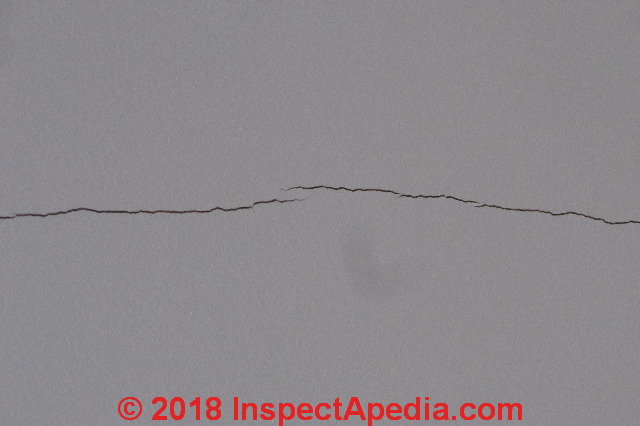Hairline Cracks In Ceiling
Repairing small cracks in plaster is easy compared to plastering a whole room. To repair small cracks in plaster, you’ll need patching compound, medium- and fine-grit sandpaper, a sanding block, a putty knife, a masonry chisel, a paintbrush, a rag, and a screwdriver. For finishing, you’ll need primer and paint.
Remember:Plaster repair is much more difficult than fixing drywall. Unless the repair is small, don’t attempt any plasterwork unless you’re trained or experienced. It’s easier to replace a wall or ceiling panel with drywall.
Its all been painted and looked great but this winter i have noticed in a few of the rooms hairline cracks that have appeared on the ceilings. I have used polyfiller hairline crack filler and crack free ceiling paint on one crack and it has come back. Is there a way to permantely get rid of these cracks? Wide cracks or cracks that run at an angel or diagonally may be a “Red” flag. It is important to note that while these cracks should be looked at more closely, these types of cracks may not be serious. Whether or not these cracks are serious is dependent on the particular circumstances. If concerned, do a quick structural check of the home.
1Use the chisel to widen and undercut the crack.
Step by step 1. Ensure that the surface is clean, dry and sound. Fill any cracks larger than hairline with Polyfilla before applying. For best results on smooth ceilings use a short pile (up to 5mm, 3/16). Stir before use and transfer to a roller tray for easy roller loading.
By making the back of the crack wider than the front surface (undercutting), you create an opening that the plaster can grip.
2Scrape out all loose plaster with the tip of the putty knife, and wipe away the dust with the rag.
Gogerewards. You don’t want any loose particles ending up in the plaster patch.
How To Fix Ceiling Cracks
3Thoroughly dampen the full length of the crack with a wet paintbrush.

Dampen inside the crack, as well. The damp surface will help the plaster adhere well.
4With the putty knife, apply a thin coat of plaster patching compound over the crack.
Small Cracks In Ceiling And Walls
Be sure to feather the edges. Plaster patching compounds can vary, so follow the manufacturer’s directions for use.
5Let the patch dry completely (usually overnight), and smooth the patch with sandpaper wrapped around a sanding block.
Begin with medium-grit (80-grit) sandpaper to smooth out the bigger bumps. Then, switch to a fine (120-grit) sandpaper to get a fine, smooth finish.
6Paint the patch with primer.
Don’t skip this step or you’ll end up with a permanently goofy-looking, non-matching area.
7Apply touch up paint to the patch in your wall color.
Hairline Cracks In Artex Ceiling
This is why you saved that half a gallon of leftover wall paint.